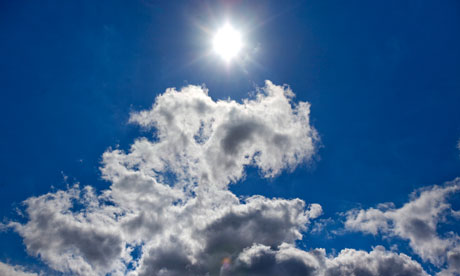Policy makers are in constant discussion about a range of climate change mitigation possibilities and among the least understood are geoengineering methods.
The injection of sulfate particles into the atmosphere to reflect sunlight and curb the effects of global warming could pose a severe threat if not maintained indefinitely and also supported by strict reductions in greenhouse gas (GHG) emissions, write University of Washington researchers inEnvironmental Research Letters.
They highlight the risks of large and spatially expansive temperature increases if solar radiation management (SRM) - whereby tiny sulfate-based aerosols are released into the upper atmosphere to reflect sunlight and cool the planet - is abruptly stopped once it has been implemented.
The technique has been shown to be economically and technically feasible; however, its efficacy depends on its continued maintenance, without interruption from technical faults, global cooperation breakdown or funding running dry. And whether or not it will actually work or do more harm than good.
According to the study, global temperature increases could more than double if SRM is implemented for a multi-decadal period of time and then suddenly stopped, in relation to the temperature increases expected if SRM was not implemented at all.
The researchers used a global climate model to show that if an extreme emissions pathway—RCP8.5—is followed up until 2035, allowing temperatures to rise 1°C above the 1970–1999 mean, and then SRM is implemented for 25 years and suddenly stopped, global temperatures could increase by 4°C in the following decades.
This rate of increase, caused by the build-up of background greenhouse gas emissions, would be well beyond the bounds experienced in the last century and more than double the 2°C temperature increase that would occur in the same timeframe if SRM had not been implemented.
On a regional and seasonal scale, the temperature changes would be largest in an absolute sense in winter over high latitude land, but compared to historical fluctuations, temperature changes would be largest in the tropics in summertime, where there is usually very little variation.
Lead author of the research, Kelly McCusker, from the University of Washington, said: "According to our simulations, tropical regions like South Asia and Sub-Saharan Africa are hit particularly hard, the very same regions that are home to many of the world's most food insecure populations. The potential temperature changes also pose a severe threat to biodiversity."
Furthermore, the researchers used a simple climate model to study a variety of plausible greenhouse gas scenarios and SRM termination years over the 21st century. They showed that climate sensitivity—a measure of how much the climate will warm in response to the greenhouse effect—had a lesser impact on the rate of temperature changes.
Instead, they found that the rates of temperature change were determined by the amount of GHG emissions and the duration of time that SRM is deployed.
"The primary control over the magnitude of the large temperature increases after an SRM shutoff is the background greenhouse gas concentrations. Thus, the greater the future emissions of greenhouse gases, the larger the temperature increases would be, and, similarly, the later the termination occurs while GHG emissions continue, the larger the temperature increases," continued McCusker.
"The only way to avoid creating the risk of substantial temperature increases through SRM, therefore, is concurrent strong reductions of GHG emissions."
http://www.science20.com/news_articles/sulfate_geoengineering_mitigate_climate_change_if_you_start_dont_stop-129858
 US scientists are set to send aerosol injections 20km up into the earth’s stratosphere in the world’s biggest solar geoengineering programme to date, to study the potential of a future tech-fix for global warming.
US scientists are set to send aerosol injections 20km up into the earth’s stratosphere in the world’s biggest solar geoengineering programme to date, to study the potential of a future tech-fix for global warming.![[IMG]](https://wattsupwiththat.files.wordpress.com/2014/06/noaa_usavg_temps_july_focuson_1936_from_20121.png)
![[IMG]](https://wattsupwiththat.files.wordpress.com/2014/06/noaa_usavg_temps_july_focuson_1936_from_20141.png)



















